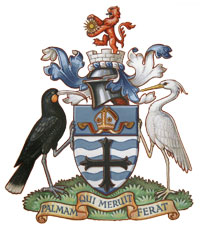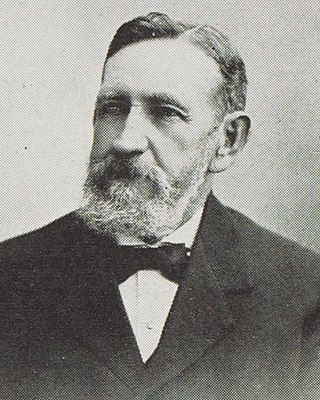Related Research Articles
Tennessee's 1st congressional district is the congressional district of northeast Tennessee, including all of Carter, Cocke, Greene, Hamblen, Hancock, Hawkins, Johnson, Sullivan, Unicoi, Washington, and Sevier counties and parts of Jefferson County. It is largely coextensive with the Tennessee portion of the Tri-Cities region of northeast Tennessee and southwest Virginia. With a Cook Partisan Voting Index rating of R+30, it is the most Republican district in Tennessee.

Nelson is a New Zealand parliamentary electorate, returning one Member of Parliament to the House of Representatives of New Zealand. From 1853 to 1860, the electorate was called Town of Nelson. From 1860 to 1881, it was City of Nelson. The electorate is the only one that has continuously existed since the 1st Parliament in 1853.

James Crowe Richmond was a New Zealand politician, engineer, and an early painter in watercolours of the New Zealand landscape.
Stanmore was a parliamentary electorate in Christchurch, New Zealand from 1881 to 1887. The electorate was represented by two Members of Parliament.
Picton was a parliamentary electorate in the Marlborough Region of New Zealand, from 1861 to 1887.
Waimea was a parliamentary electorate in the Nelson Province of New Zealand, from 1853 to 1887. Initially represented by two members, it was a single-member electorate from 1861.
Collingwood was a parliamentary electorate in what is now the Tasman region of the South Island of New Zealand from 1861 to 1881.
The Suburbs of Nelson is a former parliamentary electorate around the city of Nelson, New Zealand from 1861 to 1881.

William Acton Blakeway Adams, known as Acton Adams, was a 19th-century Member of Parliament from Nelson, New Zealand.
Henry Augustus Levestam was a 19th-century Member of Parliament from Nelson, New Zealand.
The 8th New Zealand Parliament was a term of the New Zealand Parliament.
William Gibbs was a 19th-century Member of Parliament from the Nelson Region of New Zealand.

The mayor of Nelson is the head of the municipal government of Nelson, New Zealand, and presides over the Nelson City Council. The mayor is directly elected using a single transferable vote electoral system. The current mayor is Nick Smith, who was elected in September 2022.

Jesse Piper was a Nelson, New Zealand city councillor and mayor.
The 1854 Waimea by-election was a by-election held in the multi-member electorate of Waimea during the 1st New Zealand Parliament, on 21 June 1854, and was the second by-election in New Zealand political history, coming two days after the Town of Nelson by-election.
The 1873 Suburbs of Nelson by-election was a by-election held on 14 May 1873 in the Suburbs of Nelson electorate in Nelson during the 5th New Zealand Parliament.
The 1881 Suburbs of Nelson by-election was a by-election held on 11 January 1881 in the Suburbs of Nelson electorate in Nelson during the 7th New Zealand Parliament.
The 1889 Nelson by-election was a by-election held on 3 April 1889 in the Nelson electorate during the 10th New Zealand Parliament.
The 1868 Collingwood by-election was a by-election held on 18 March 1868 in the Collingwood electorate during the 4th New Zealand Parliament.

The mayor of Richmond was the head of the municipal government of Richmond, New Zealand. The position existed from 1891, when the Borough of Richmond was formed, until the borough was amalgamated into Tasman District in the 1989 local government reforms.
References
- ↑ "The Nelson Election". West Coast Times. 6 June 1881.
- ↑ "Notes from Wellington". The Marlborough Express . 30 May 1881.
- ↑ "The Nelson Election". Nelson Evening Mail. 11 June 1881.
- ↑ "Mr Levestam elected for Nelson". Auckland Star . 8 June 1881.